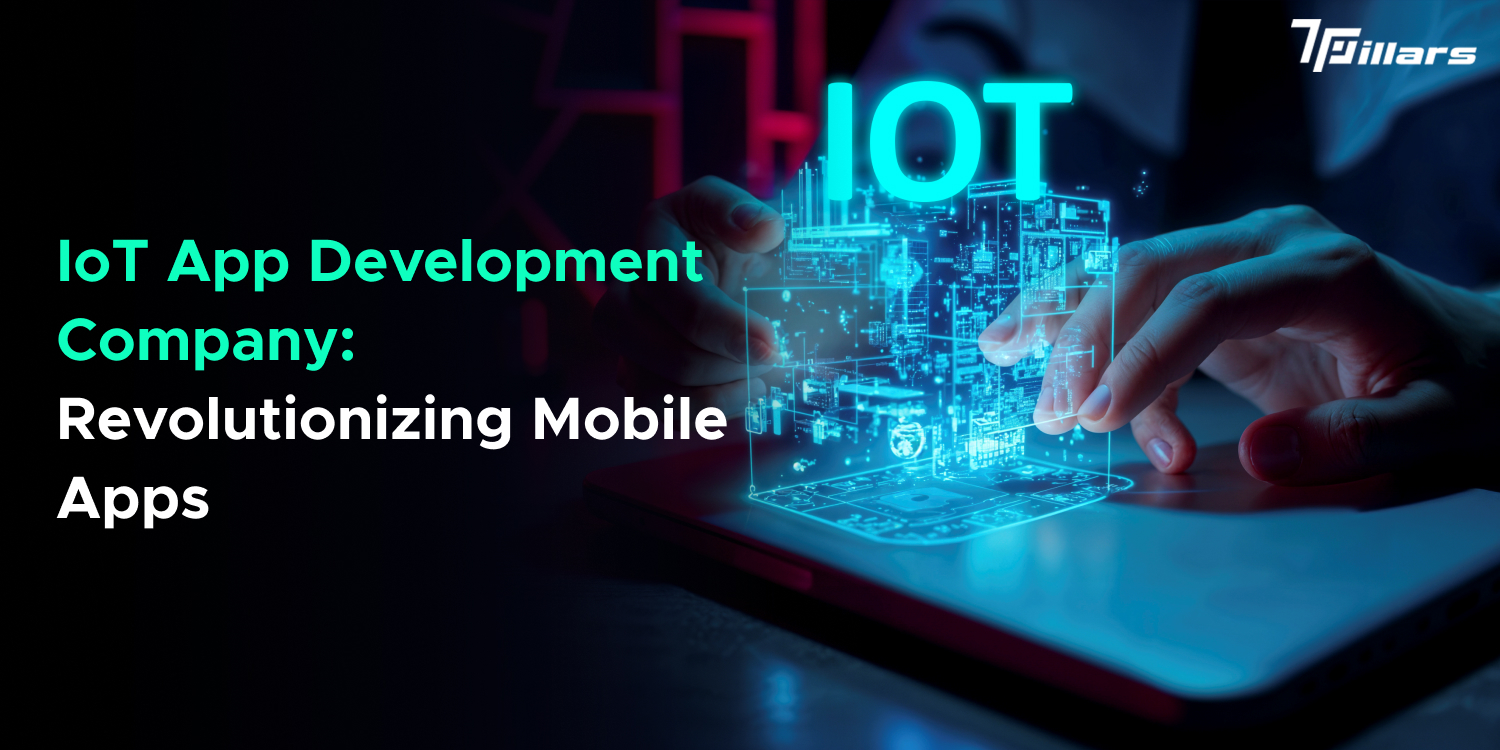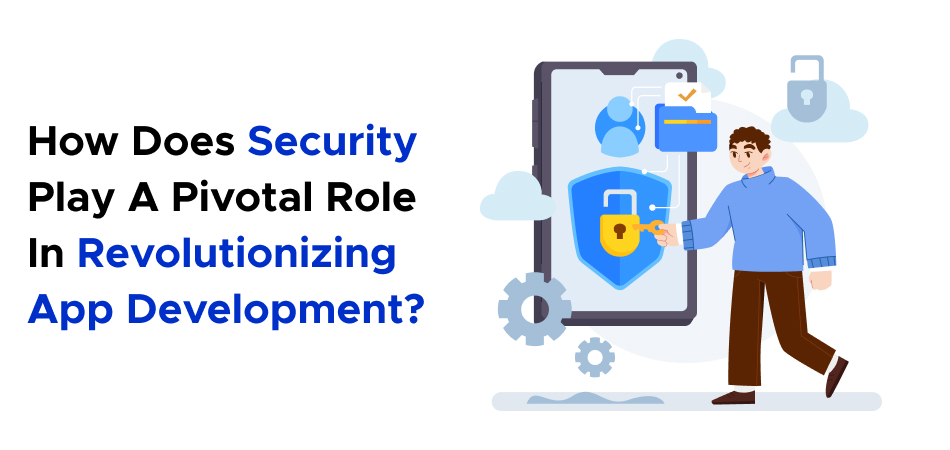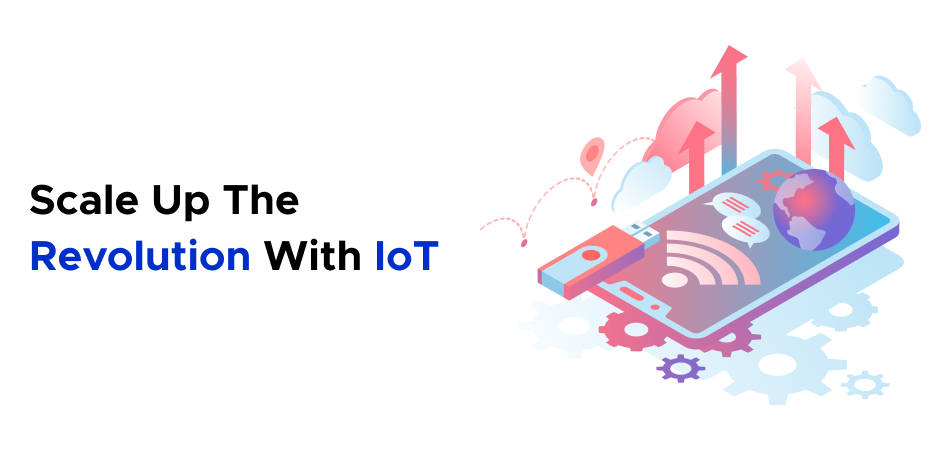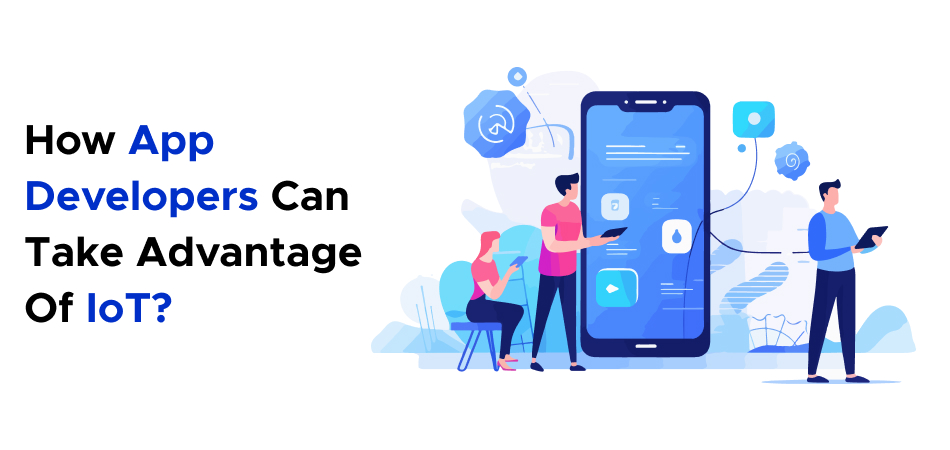3 Feb 2025
IoT App Development Company: Revolutionizing Mobile Apps
Shaun Bell

The world is getting interconnected as well as fast. Today, it’s impossible for any person to remain insensitive to the influence of this IoT, which has dramatically impacted worldwide mobile application development, including IoT app development. The meaning of IoT is connecting an ordinary physical object to the internet and allowing it to collect and provide information. IoT is radically transforming mobile applications in aspects never witnessed before. Integrating IoT systems into mobile apps presents new opportunities to developers and users because smartphones are more productive than ordinary laptops.
We are considering operating the basic infrastructure in our home through a mobile device app and monitoring our health indicators in real time using fitness apps with smartwatches integrated with the phone. These experiences are possible today due to the merger of IoT and mobile application development. With smart homes, connected vehicles, and healthcare, the contribution of IoT to the advancement of mobile applications is quite tremendous. As an IoT app development company, businesses are exploring innovative ways to harness this technology, creating more efficient and connected experiences for users.
Revolutionizing User Experience: IoT’s Impact on Comfort, Flexibility, and Autonomy
This revolution focuses on how IoT improves the user experience regarding comfort, flexibility, and autonomy. The real-time basis of data collection enables mobile applications to respond intelligently to user actions. IoT has become a new realm for creative developments in the application field. It provides developers with new opportunities to create applications with new interfaces and applications that interact with the physical world.
As IoT progresses in the future, mobile app developers will face the challenge of seeking ways to incorporate innovative technologies. This challenge creates innovative ideas and redesigns how people use technology daily. In this blog post, we will acquaint ourselves with the fact that IoT is leading a reconsideration of mobile app development, industries, and the future where the physical and digital worlds become one.

What is IoT? Why Does it Matter to Mobile Apps?
What is IoT?
The Internet of Things is a system in which physical objects—devices with sensors, software, or other technology—are joined to give and receive data online. These objects can be any form of equipment, home appliances like refrigerators, automobiles, industrial purposes, wearables, or health-related appliances. IoT is at the center of what might be described as enabling the flow of information from the physical world or bridging the physical and digital worlds.
For example, you can set the temperature in your house to respond to your motion sensors or your preferred temperature for a particular day using a smart thermostat that can observe your tendencies and location or a smart fitness tracker that can observe your daily physical activity and transfer these details to your mobile application in real-time. These intelligent devices lay down a network of related equipment that share information, process it, and then act on it, all to boost the cumulative value of user experience.
Why is IoT important to mobile applications?
The integration of IoT in mobile applications has brought about a dramatic shift in the application and usability of mobile applications. Since smartphones control and monitor IoT devices, mobile applications represent the means of interacting with the imaginative world, where formerly they were the ends. Here’s why IoT is crucial for mobile app development:
1. Enhanced User Experience
Machine-to-machine connection makes mobile applications more innovative, smarter, and more convenient for users. Mobile apps with IoT capability can, therefore, gather data from related devices in real-time and hence meet users’ required expectations. For instance, a fitness application allows integration with a smartwatch for solutions for the user’s general health. An application of home automation could interact with the smartwatch to change the lighting or security in the home depending on the activity and time of day.
2. More contacts and use of intelligent methods
In the context of IoT, mobile apps gain increased connectivity and automation. For example, with the applications of IoT integration, the user can manage several connected devices, including climate control, surveillance cameras, and entertainment gadgets, through a mobile application. Another advantage of automation is that it makes mobile app interactions with users predictive and self-executive to provide additional convenience.
3. Real-Time Data and Insights
Mobile apps integrating IoT can offer accurate real-time information through the information gathered from wearables such as smartwatches, health monitors, or connected cars. It can help with decision-making, fine-tune performances, boost the level of user participation, and provide a display of real-time information. For instance, mobile apps in healthcare that incorporate IoT allow doctors to check patients’ biometrics and even perform estimates in the event of an emergency from a distance.
4. New Business Models
With the emergence of IoT, mobile app developers have a new opportunity to generate new revenues. Some examples of the additional services that IoT apps can provide are predictive maintenance, monitoring capabilities, and subscription-based services that give constant and real-time access to IOT data. This way, developers can develop new applications in the ever-expanding IoT age, such as smart homes, health, transport, and farming.

Mobile Apps as Command Centres
Mobile applications are no longer just a tool used to enable horizontal communication or a way of entertainment. Today, they act as commanding hubs that manage, coordinate, and supervise several interconnected systems and appliances. The increasing application of (IoT), Artificial Intelligence (AI), and cloud technologies has made mobile applications the command centers controlling everything from home appliances to business processes, providing users unparalleled control and easy access.
- Integration of IoT Devices
Integrated operation with other IoT devices is one of the main strategies mobile apps use to operate as command centers. With one app on their smartphone, a consumer can control many smart devices – light, thermostat, change temperature, lock doors, or check cameras. This concentration of control makes possible intuitive interfaces with smart homes, vehicles, health care services, and whatnot. For instance, a mobile application that can easily change lights, appliances, and security systems of resumed homes through the touch of buttons on the phone.
- Simplified Control and Supervision
Most mobile applications integrated with IoT and cloud services offer control and monitoring in real-time. Whether monitoring your biometrics with smart glasses or managing a fleet of delivery trucks, your mobile application can capture data, process it, and deliver it in an easily consumable form. Real-time accessibility of such data as device performance, health stats, or security status tremendously contributes to convenience and decision-making. It is most valuable in healthcare, supply chain management, and manufacturing, where constant updates are required for business functioning.
For instance, a logistics app could enable a fleet manager to view vehicles’ locations, review fuel consumption, and analyze vehicle performance from their mobile gadgets. In the same way, innovative agriculture applications can record soil moisture and crop conditions and control the automation process of irrigation from remote areas.
- Automation and Efficiency
The mobile app command center also enforces automation. Human beings require little effort to intervene through artificial intelligence and machine learning. For instance, a smart home application may realize and change the set temperature depending on the user or realize that there is unauthorized activity and inform the house owner. Likewise, the app enables businesses to lighten the workload of normally repetitive functions like data gathering, data reporting, and system updating, thus allowing the company to function more effectively.
- Real-time notification and Alerts
Another valuable function of mobile apps as command centers is the possibility to send notices and notifications immediately. Whether it is a security breach alert, system breakdown, or health signals, mobile applications can instantly grab users’ attention, resulting in speedy control and action. In such industries as healthcare, this feature can be of great help in providing a doctor with notification of the change in a patient’s condition for the worse.
- Security- A central Tenets of IoT App Development
IoT devices are becoming increasingly common in people’s everyday lives, so their security is a significant issue. In every sphere of life, from managing homes to interactions with healthcare facilities, IoT-based applications process sensitive information and control critical peripheral devices, making them particularly vulnerable to cyber threats. Therefore, an IoT app development company needs security features to protect users and their data.
Security in the Internet of Things – An Emerging Concern
IoT devices are weak links by design because they are always connected with high traffic rates and contribute extensive amounts of data. This interconnectivity provides numerous opportunities for an unauthorized person to penetrate. Regardless of the linked product– a smart thermostat or a wearable device – it must be protected from threats. IoT security can be best described as the art in which an IoT app development company encrypts data, safely stores data, and updates frequently to reduce these risks. The aim is to develop IoT applications that ensure that the data from users and other individuals are safeguarded.
- Securing IoT App – Best Practices
To mitigate the problems, an IoT app development company needs to follow specific guidelines that can only be provided through the following best practices: These are improvement techniques in design procedures, such as utilizing end-to-end encryption for data transmission, employing multi-factor authentication for user access, and possessing secure applications with firmware updates. Moreover, penetration testing and vulnerability assessments should be conducted periodically and included in the development life cycle. Adopting these practices prevents breaches, unauthorized access, and other cyber-related risks, as explained below.
- IoT App Development Company in Australia: A Focus on Security
Thus, the original requirements for an IoT app development company in Australia imply adhering to not only worldwide standards but also local legislation and legislation protecting personal data. Australia places a lot of value on data protection laws, which demand that corporations design apps that conform to security frameworks; the process is an inseparable part of development.

Main Security Solutions of IoT App Development
That is why IoT applications’ security is a critical concern, especially as these applications continue to integrate into people’s lives. Here are some essential security measures that an IoT app development company should implement:
1. Data Encryption
Data encryption is one security standard that significantly impacts a company or organization’s overall protection. It ensures that information is protected while in transit and while stowed. This is achieved because even if data passes through several breaches, it still cannot be understood without the decryption keys.
2. Authentication and Authorization.
It is noteworthy that the protection of IoT apps requires the use of robust authentication and authorization measures. This means that MFA and RBAC should guarantee that the users and devices that access the app and data are given permission.
3. Regular Security Updates
One crucial factor that an IoT app development company can never overlook is that updated and consistent security patches should address any susceptibility or new form of risk. OTA updates allow the app to remain secure without the user engaging in decision-making in this regard.
4. Secure APIs
IoT apps use APIs to interface with devices and servers that are always part of the IoT system. The confidentiality and integrity of information in these APIs should be protected by encryption, user authentication, and API access restriction.
5. Device Authentication
The other aspect of security that must be implemented is device authentication. All devices must be authenticated before being allowed on the network, meaning there are few chances of devices gaining unauthorized access.
Together, these measures improve trust for IoT application security and data integrity to counter cyber threats.
Scaling Up for the IoT Revolution
These companies find that the Internet of Things (IoT) is reshaping entire industries and opening new prospects in medicine, transport, farming, and residential use. Nevertheless, managing multiple interconnected devices has become increasingly challenging with the increasing usage of IoT applications. To extend APPs’ value and maximize benefits from the new IoT era, businesses and IoT app development firms should follow some key scaling strategies.
1. Support for Platform and Cloud
An essential component of scaling IoT is the Cloud environment. The IoT devices produce an immense amount of data, and storing and subsequently analyzing this data requires highly scalable cloud solutions. Multitudes of devices can be connected; data can be accumulated, processed, and regulated, and all that can occur without hindrance to business operations. Another solution that could be applied to minimize the latency and increase overall application availability is the implementation of edge computing, which processes data closer to its source.
2. Security and Privacy
However, as the rate of connected devices continues to rise, the potential for threats to both security and privacy grows. Security needs to be built in from the ground up as IoT devices are prime giveaway targets for hackers. Key practices include effective encryption, incorporating multiple forms of identification, and constant security updates. Also, it is crucial to follow industry standards for retaining users’ data privacy, such as GDPR. An IoT app development company can help implement these security practices while ensuring compliance with privacy regulations.
3. Interoperability and Standardization.
IoT integrates numerous devices and systems; therefore, such elements must be interoperable for the ecosystem to extend. Even though there is relative freedom in selecting the smart devices to be implemented, the communication protocols of these devices must be standardized, and the levels of compatibility between various devices from different manufacturers must be ensured to prevent the innovative system’s fragmentation and facilitate the integration of the devices.
4. Data Management and Analytics
Dealing with enormous amounts of data has become difficult recently, especially as the networks of IoT devices grow. Companies need to adopt sophisticated data arrangement and analysis solutions to acquire value. AI and ML can automate this process and function to help businesses make instantaneous decisions based on information.

How Developers Build for Scalability?
Since more devices are connected to the internet, scalability is an issue that grows in importance for developers who work in the IoT applications field. Two critical components are how IoT apps could maintain and enhance their capability to accommodate the growing data, devices, and users. Here, we have explained how developers control and attain scalability in IoT app development on a large scale.
1. Cloud-Based Architecture
Organizations can leverage cloud infrastructure as one of the key scalability concepts. HY1 SaaS providers such as AWS, Azure, and Google Cloud have elastic resources that can be easily customized to a customer’s needs. Using cloud services, developers can control and store vast amounts of data provided by IoT devices that are not connected to hardware features. Thus, cloud solutions also enable real-time data processing opportunities, which plays a crucial role in IoT in large enterprises. An IoT app development company can help integrate cloud infrastructure with IoT solutions to optimize scalability and real-time data processing.
2. Edge Computing
In this sense, edge computing is popular in IoT applications to avoid high latency and enhance application functionality. By contrast, edge computing enables data to be computed locally on the device or the nearest point, absent the need for the data to connect with a central server. It relieves the central systems of a load and increases the processing rate, leading to faster decision-making and making it suitable for applications that often need real-time response.
3. Modular Design
Software application designs with modular architecture enable developers to scale certain application parts independently of the other parts. Specifically, each module can be designed, implemented, and extended separately, providing flexibility in adapting the device to incorporate new devices or capabilities. It also assists in managing increasing complexity depending on the evolution of the IoT Ecosystem.
4. Load Balancing
Load balancing, conversely, sorts out the traffic and ensures that it is directed to various servers rather than one server being congested with traffic. This enhances usability and minimizes the likelihood that apps become overloaded and freeze or quit working altogether. For example, a company would like to accommodate more users and devices in a Facebook application.
Real-Time Interactions: Dynamic Uses in IoT Applications
IoT applications require real-time interactions, keeping users and systems glued to their environment. These devices collect information at various periods; for this reason, the flow of data and the inclusion of interaction between devices and mobile applications are imperative to foster efficient and competent real-time interactions.
1. Instant Data Processing
Transactions imply real-time interactions, which in turn require instant data analysis. The Internet of Things, for example, wearable sensors and cameras, produces massive amounts of data that require analysis and decision-making within a certain period. IoT apps can process and act upon this data without much latency to inform users in real time or perform corresponding actions through cloud computing or edge computing. An IoT app development company can assist in creating solutions that ensure seamless, real-time data processing for efficient decision-making and user engagement.
2. Improved User Experience
In the context of mobile applications, ‘real-time interaction’ means one thing: quicker feedback. For instance, a smart home application allows users to control the room’s temperature; security applications may notify users of movement within the home’s premises. This improves the user experience since the user can be in charge of the device, and information feedback is also immediate, making devices appear more natural.
3. Remote Control and Automation
Real-time interactions also allow for emotion—trolling and remote automation. Customers can regulate IoT devices from the comfort of their homes and even view real-time action alerts. Moreover, automation rules are capable of actual-time responses, like turning on the lights when a specific user gets near home.

Real-time capabilities in IoT applications – Real examples
Interactivity in IoT apps is a primary integral since it enables the direct response of IoT apps to devices and systems that are connected to them. Here are some samples of important areas where features associated with real-time characteristics look exceptionally bright.
1. Smart Home Automation
In smart homes, IoT apps and locations can control and monitor connected devices, including appliances li, lights, thermostats, security cameras, etc., in real-time. For example, innovative mobile applications can evenly control temperature or light depending on the user or change in the environment within a short period and meet the user’s demand. Security systems can also give notifications when the motion is seen; therefore, users must act appropriately immediately.
2. Healthcare Monitoring
Bright clothing integrated with IoT healthcare systems offer health updates in real time. They can identify essential metrics, including the number of beats per minute, blood pressure, and even the amount of sleep a user gets. If these parameters worsen, they can alert the user and a doctor. This capability helps to make forecasts and provide immediate reactions to potential health disorders, enhancing patient treatment outcomes. An IoT app development company can help design and implement these advanced healthcare solutions to optimize patient care and real-time monitoring.
3. Fleet Management
In fleet management, IoT apps monitor different vehicles in real-time. Fleet managers can track location, fuel consumption, and real-time performance, essential aspects of route planning, delivery time control, and vehicle maintenance. Direct access to data allows for optimal operational decisions in the organization.
Personalisation Through IoT
The Internet of Things (IoT) has introduced personalized experiences into society since its control. Due to the accumulation of connected devices’ information, IoT apps enable providing users with services and features they prefer and follow as activities, interests, and behaviors.
Mobile Internet, machine-to-machine, and other enterprise applications are paving the way for a new wave of personalization apps that use user data.
Observing behavior, choice, and current data can make these applications more personalized in pattern matching, providing more meaningful and effective exchanges. It improves a user’s satisfaction since the app progressively finds the best match for their needs.
IoT app development corporations are also interested in creating applications that allow using this data more sensibly to deliver all-encompassing and ideally suited client needs and experiences. Australian IoT app development companies are also at the forefront as the world shifts to developing new applications that focus on individual users.
Examples of Personalisation in Action
1. Smart Homes
In smart homes, IoT devices control and change settings according to the user’s preferences. For instance, smart thermostats learn a person’s temperature preferences and adjust automatically. Likewise, Intelligent Lighting Systems can adjust the straps depending on the user’s activity, such as dimming at night or other specified times.
2. Healthcare
In healthcare, IoT wearables monitor client health status, such as pulse rate, daily activity, or sleep. Applications can then offer health advice, record advancement, and signal when a user’s data has reached a particular level. This approach effectively enables people to increase personal control over their health in general or for a specific disease/fitness regime.
3. Retail
The adoption of IoT in retail leads to customization of the experience since every individual has unique characteristics. A few examples are creating smart kiosks or wearables that track consumer patterns and recommend products based on in-store consumer experience.
Conclusion
The Internet of Things affects mobile application development and how applications are built, utilized, and engaged. Through IoT integration, apps are becoming intelligent, innovative, safe, and highly sensitive to customers. These apps became commanding centers permitting coordination, upgrade, and superior presence interconnections. IoT applications should become a part of the world since personalization and security are significant in the connected world.
At that stage, the further development of IoT presents more and more opportunities for new creations in the sphere of mobile apps. From users’ points of view, this is a more convenient, engaging, and customized application UI/UX. To developers, IoT has become a playground where they can go beyond application functionalities and user expectations and develop once-impossible solutions.
IoT can significantly benefit many businesses, making it necessary for any business that wants to benefit from this technology to look for an IoT app development company. These firms are dedicated to enhancing mobile application’s existing Internet of Things-based convergence. The number of IoT app development companies is increasing, so the future will be an interesting blend of the physical and digital worlds.
The new generation of mobile apps is connected to IoT and offers endless opportunities for developers and users. The future is now, and the Internet of Things leads it. Connect with our team today at 7 Pillars today to revolutionize your business using IoT technology.








